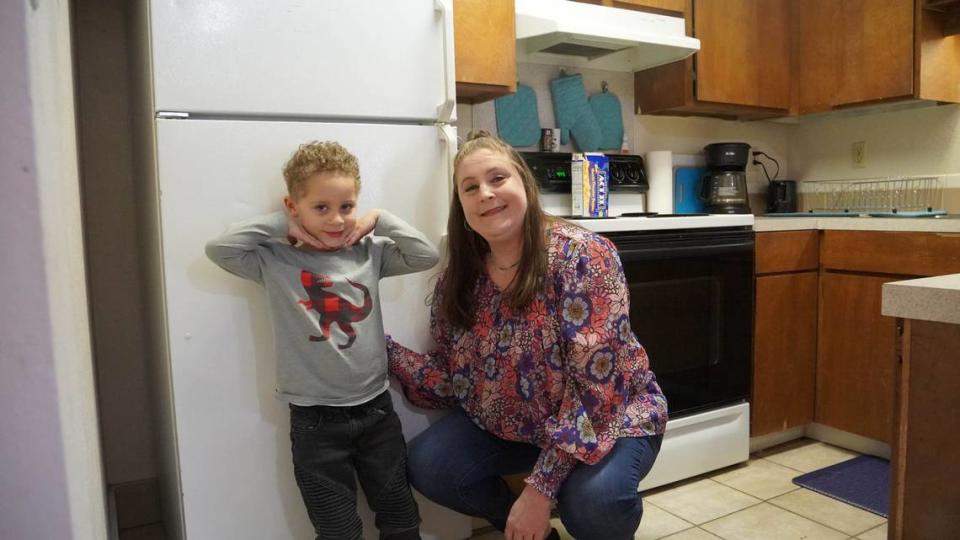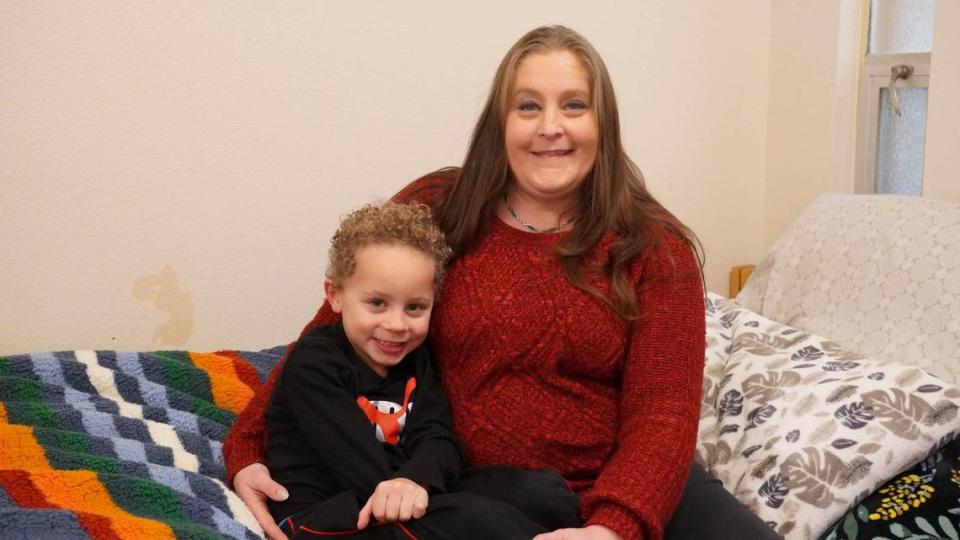New subsidized ‘affordable’ apartments won’t help most Boiseans who can least afford them
The city of Boise just announced a partnership with Ada County to build 250 apartments dedicated to people who earn significantly less than average. That development is one of several that the city has touted in its effort to bring affordable housing to people with “very low incomes.”
But will apartments that cost $900 or more per month help homeless people who now find shelter at Interfaith Sanctuary or the Boise Rescue Mission? Shelter leaders say no.
“I definitely think there is a disconnect when people think of affordable housing,” said Jodi Peterson-Stigers, executive director of Interfaith Sanctuary, told the Idaho Statesman. “They think it’s low-income housing, but it’s not. Most of the units that are coming up, our guests cannot qualify for.”
Shelter residents struggle to qualify for rentals
People staying at Boise’s homeless shelters can make anywhere from $0 to a couple of thousand dollars per month, Peterson-Stigers said by phone. But they rarely qualify for apartments because of credit issues, background checks or high demand.
Most of the affordable apartments that Boise expects to open in the coming years promise to be affordable to tenants making 60% or less of the area median income. According to the U.S. Department of Housing and Urban Development, the median income in the Boise metropolitan area is $68,865 for a single person, $78,653 for a couple and $98,300 for a family of four. Sixty percent of that is $41,319 for a single person, $47,192 for a couple and $58,980 for a family of four.
“That’s big money for someone coming out of homelessness,” said the Rev. Bill Roscoe, president of the Boise Rescue Mission.
Even a homeless person making 60% of the median income may have a criminal or eviction record, which makes renting on the private market difficult, Roscoe said.
In partnership with Ada County, the city of Boise plans to lease nearly two acres off Fairview Avenue, just east of Cole Road, to developer J. Fisher Cos. to build the 250 apartments.
“The city of Boise and Ada County are happy to announce Ada County has earmarked a substantial sub-grant of $4.5 million to match the $5 million the city of Boise has pledged toward the development of affordable housing,” City Hall said in a Nov. 27 news release.
The city also leased land to Fisher on Franklin Road and Orchard Street to build 205 apartments, and to Eagle developer The Pacific Cos. on Denton Street to build 201 apartments.
Each of the developments would be for tenants making up to 60% of area median income, according to previous Statesman reporting. Why do local officials target tenants making that much instead of tenants who make less? A Boise developer has said that’s the lowest income level that many developers can afford to build for, even with the government subsidies they receive for low-income housing.
In the Fairview apartments, the city plans to set aside 10% of the units for New Path Community Housing tenants exiting homelessness. New Path is a 40-unit apartment building at 2200 W. Fairview Avenue. Residents at New Path and Valor Pointe, two supportive housing buildings that host Ada County residents who had been chronically homeless, make far less than 60% of area median income. Valor Pointe, a 27- unit apartment building at 4203 W. State St., is reserved for veterans.
Jill Youmans, spokesperson for the city of Boise, told the Statesman in an email that tenants at New Path and Valor Pointe are extremely low income, “and in some cases do not have income.”
New Path and Valor Pointe have supportive services on site, including Terry Reilly Health Services, a social worker, a case manager, peer specialists, a registered nurse and a housing specialist. All of the tenants have either Section 8 or Veterans Affairs Supportive Housing vouchers, which are funded by the federal government to pay for some of a participating person or family’s rent, with the person or family responsible for the difference between the actual rent and the subsidy. The veterans vouchers are for housing and supportive services.
Of any income that residents have, 30% goes toward rent, Youmans said.
Maureen Brewer, housing manager for the city of Boise, said the city approaches the need for homes with rents affordable to people making 60% area median income or less, and the need to house people experiencing homelessness, in separate ways.
The city wants to build 1,250 homes for people making 60% of area median income and below, in addition to building 250 units of supportive housing for chronically homeless people, like Valor Pointe and New Path.
Brewer said the city knows homeless people cannot afford the 60% AMI units, but having more affordable units can help people from becoming homeless because they can’t afford their rent.
“It is equally important in my mind to prevent new people from experiencing homelessness,” Youmans said by phone. “And we do that by taking people who make a little bit less than AMI and providing affordable housing for them, that they can afford and that they can have stable housing in.”
Developers don’t make money on low income housing
Brewer said the city is “an active and enthusiastic partner” in affordable housing, but Boise has “extremely limited resources” to build affordable housing. That is why it requires partners in the private sector.
Many of Boise’s latest affordable housing projects take advantage of the city’s Housing Land Trust program, which allows the city to lease city-owned land to developers at a low cost in exchange for the developer building or preserving affordable housing.
Old Boise developer Clay Carley told the Statesman previously that donated land can help developers build affordable apartments, but it is usually not enough.
Last year Carley said it cost about $270,000 for a developer to build a one-bedroom apartment in the Boise area. A for-profit developer wants to make a 5% return on the investment from a project, he said.
That’s why developers dedicate only a small portion of a new apartment building for low-income tenants, and rarely to tenants who make below 60% or 80% of AMI, Carley said.
Another tool developers use is a federal tax credit. Each year, the federal government awards housing tax credits to the Idaho Housing and Finance Association to distribute to developers building affordable housing. But the credits are limited, and only a few projects get funded each year.

What shelter leaders say homeless people need
The city has three projects planned to provide about 190 homes like those in New Path and Valor Pointe that offer supportive services to people experiencing homelessness, Brewer said. They are 95 new apartments at New Path, 47 units in the University Park Apartments, at 860 W Sherwood St. near Boise State University, which the city recently bought; and 50 units near the downtown fire station, near Bannock and 12th Streets, Brewer said.
Roscoe said he supports what the city is doing to encourage more affordable apartments. He and Peterson-Stigers agree, though, that there has to be a step between living in a shelter and living independently in an apartment.
“I’m not an expert in housing, but I know my guests well,” Peterson-Stigers said. “I think what is missing is more transitional housing.”
Peterson-Stigers said transitional housing would be less like an apartment building or complex and more like a college dorm.
“The reason why they build college dorms is because it’s kids leaving their home for the first time,” Peterson-Stigers said. “They’re not self- sufficient. They’ve had their mom and dad do their laundry. They have breakfast waiting at the table. Kids will stay for maybe a year or two on campus until they get their wings, and then they move into their own housing choice. That’s what I think about when I see my guests.”
The Rescue Mission operates about 50 transitional apartments throughout the valley. The units are “not luxury apartments,” Roscoe said. Each resident has a single room with a bathroom, sink, microwave and refrigerator, he said.

The organization has 32 such apartments for veterans at its River Of Life shelter on 13th Street downtown, seven for just women and children at the Next Step Apartments in Nampa, and 12 for men at the Recovery Lodge in Nampa, Roscoe said.
The organization is working to open 60 new units in a former assisted living home on Curtis Road near Overland Road in Boise. The structure will be similar to a dormitory. Each apartment will have a full bathroom but no kitchen, since meals will all be served in a dining hall, Roscoe said.
Tenants of Rescue Mission-operated apartments pay rent on a sliding scale based on income, Roscoe said. One tenant may pay $300 a month, while another pays $100.
There is “a huge need” for this type of transitional housing, Roscoe said.
“Take the single mom with a couple of children,” he said. “If she’s making $20 an hour to support that family independently, I don’t even know how they would do it, to be honest with you. So our program gives that single mom with two kids time to live independently, or at least mostly independently, and save money.”
Ada County, Boise leaders clashed over homelessness. They’ve just come together over this
So you’ve heard your property taxes have gone down this year. Here’s what to expect

